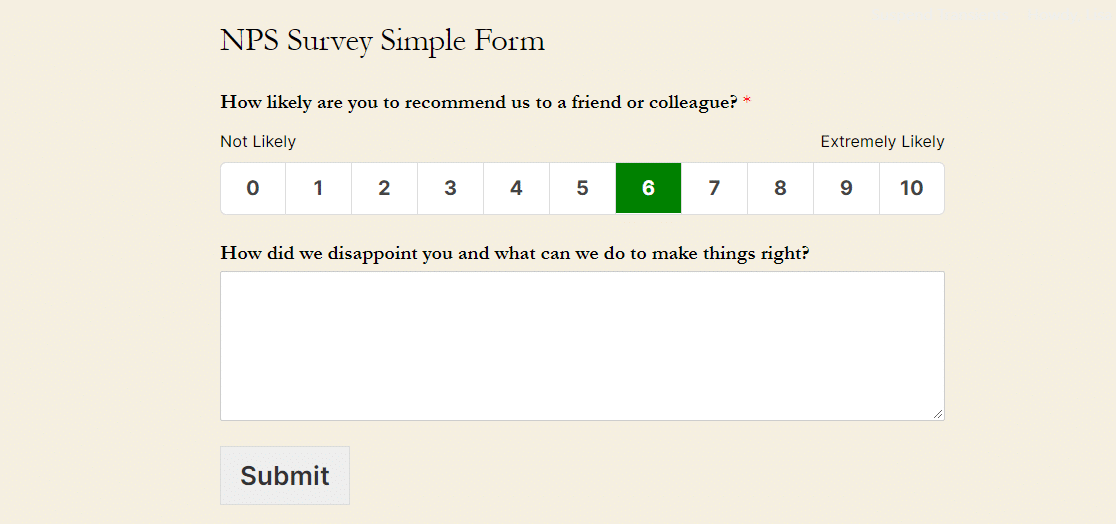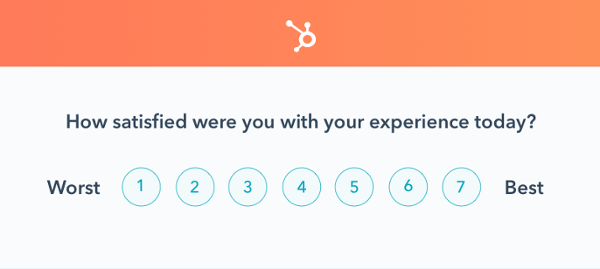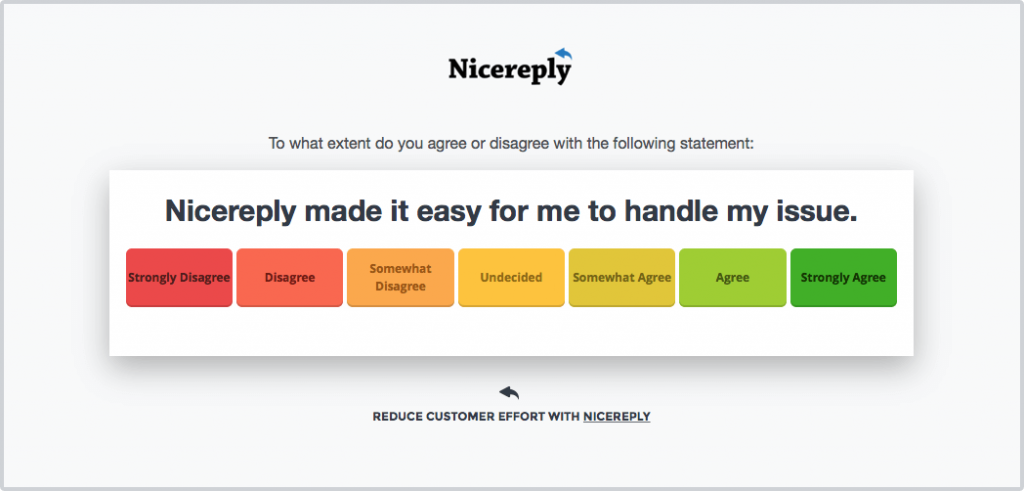The very first principle of the Agile Manifesto states that the highest priority of a software business should be to satisfy the customer through early and continuous delivery of valuable software. Customer feedback loops are critical to ensure that businesses are building software that’s valuable to the customer—and stays valuable to the customer over time.
Net Promoter Scores, Customer Satisfaction Scores and Customer Effort Scores are the three most popular ways to collect customer feedback and ensure you’re providing value.
Let’s take a closer look at these three techniques and how to implement them in practice.
NPS, CSAT and CES are the three most popular ways to collect customer feedback—here’s how to implement them in your business. Share on X#1. Net Promoter Scores (NPS)
The Net Promoter Score, or NPS, is a survey that asks customers how likely they are to recommend your product, service or brand to others. Respondents typically answer on a 0 to 10 scale where 0 is “Very Unlikely” and 10 is “Very Likely”. And the survey typically appears after a purchase, ahead of a subscription renewal date or at another important juncture.

Example of an NPS survey. Source: WP Forms
The responses fall into three groups:
| Score | Title | Description |
| 0-6 | Detractors | Customers that are unhappy and at risk of churning. |
| 7-8 | Passive | Customers that like your company, but don’t “love” it at this point. |
| 9-10 | Promoters | Customers that love your company and will actively promote it. |
The actual NPS is calculated by subtracting the percentage of Detractors from the percentage of Promoters with scores ranging from -100 to 100. On average, scores less than 0 are typically a bad sign, 0 to 30 are normal scores, 30 to 70 are good scores and anything over 70 is a great score that suggests that your customers have high levels of loyalty.
As part of the NPS survey, many businesses add an open-ended question after the initial score submission that asks about the rationale for the score. You can use these insights to drill down into some of the most common problems that customers find with your software and ultimately resolve them in order to improve NPS over time.
#2. Customer Satisfaction Scores (CSAT)
Customer Satisfaction Scores, or CSAT, are designed to measure levels of customer satisfaction. Oftentimes, they’re sent when you want to measure how happy clients are with a recent change to or a specific part of your product or service. For example, you may want to see how customers feel about a new feature or the onboarding process.
CSAT surveys are more flexible than NPS and may use a 5-star rating system or a number system. For example, a 5-star rating system might ask how satisfied the customer was with the onboarding process with 1 star being “Very Dissatisfied” and 5 stars being “Very Satisfied”. You can also ask multiple questions to get more insights at the same time.

Example of a CSAT survey. Source: HubSpot
Unlike the NPS, the CSAT is typically converted into a percentage from 0% to 100%. A 4-star or 5-star rating might constitute “satisfied” responses. The percentage reflects the number of 4- or 5-star responses as a percentage of all responses. A “good” or “bad” score largely depends on the individual features and what’s typical for your business.
#3. Customer Effort Scores (CES)
Customer Effort Scores, or CES, measure the effort that a customer makes to use a particular feature or service. For example, CES surveys are common after interactions with customer service or an onboarding sequence to assess the experience. The goal is to determine when it may be necessary to rethink or simplify a feature or process.

Example of a CES survey. Source: NiceReply
Many CES surveys use a series of faces or colors to express the difficulty of an experience or task. For example, there may be five faces that range from “happy” to “frustrated”. Other surveys might use sliding scales or other descriptors to help customers express their level of effort without having to think about converting it to a numerical score.
The two “happiest” may represent “low effort” scores whereas the two most “frustrated” may represent “high effort” scores. The actual CES is calculated by converting the “low effort” and “high effort” scores into percentages of all users and subtracting the “low effort” percentage from the “high effort” percentage. Of course, higher scores are better than lower scores.
Get Help Addressing Feedback
Customer feedback may provide a wealth of insights into features and processes that may need to be fine-tuned, but these efforts must be balanced with an existing roadmap and feature development. It can be hard to allocate enough time to launch planned features on time, much less rework existing features that need some help.
Sharkbyte’s Team Augmentation services are well-suited to these kinds of tasks. If your team has uncovered some issues but lacks the manpower to address them, our experienced senior-level developers can easily step in and provide an extra hand. We work seamlessly with your team to deliver high-quality software that meets and exceeds expectations.
Contact us today to discuss your project!
The Bottom Line
Customer feedback is an essential part of the Agile development process and ensures that you’re building successful products that customers love. NPS, CSAT and CES are the three most common ways to collect customer feedback that you can use to improve. Fortunately, many tools make these surveys easy to implement and analyze.
If you need help implementing these improvements, Sharkbyte’s experienced team of senior-level software engineers can help. Contact us today to discuss your project!



